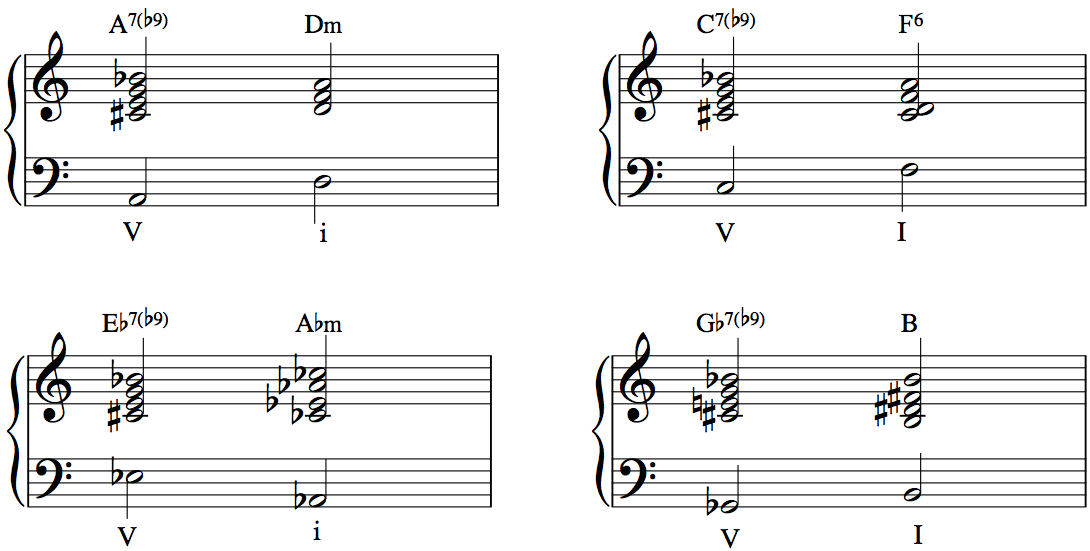Now that we’ve examined the specifics of what makes dominant chords special in Part 1 of this article, let’s continue by taking a look at diminished chords and noting some particular observations. What do you notice about this diminished chord?

Well, we could call this a “C# diminished 7th” chord. A diminished 7th chord is created by stacking minor 3rds on top of one another. But there is something more important to note about this chord. It contains two sets of tritone intervals.

Do you see the two sets of tritone intervals, first the C# and G, and also the E and Bb? As we noted before, the presence of a tritone interval should alert us to the possibility of dominant function. This chord has two sets of tritone intervals, so it certainly qualifies as something we should inspect further to see if it is functioning as a dominant chord. We need to ask ourselves “Which dominant chords have the above tritone intervals as their guide tones?” The answer is A7, C7, Eb7, and Gb7. The A7 and Eb7 chords will have the C#/G guide tones, and the C7 and Gb7 will have the E/Bb guide tones. So does that mean that the C# diminished 7th chord can be an A7, C7, Eb7, or Gb7 chord? Well, actually… yeah.
Let’s talk about context.
In isolation, with no other music around it, the C# diminished 7th chord above is just that – a C# diminished 7th chord. But let’s try putting each of those roots – A, C, Eb, and Gb – in the bass while playing the C# diminished chord in the right hand.

Notice anything? Each of the chords is a dominant chord with a flat 9th. So by playing the C# diminished chord in the right hand and playing a different root in the bass with the left hand, the result is one of four different “dominant flat-9” chords. What that means is that we can treat each of these chords as a “V” chord bringing us to a different “I” chord (and the “I” chord can be either major or minor).

Play these four chord progressions at the piano and notice how each uses the same chord voicing in the right hand while only changing the root in the left hand.
So now, when you encounter diminished chords, consider whether they are actually functioning as dominant chords. And if you’re an arranger or composer, you’ve just learned of a way to have one diminished chord help you to resolve to one of four different “I” chords.

